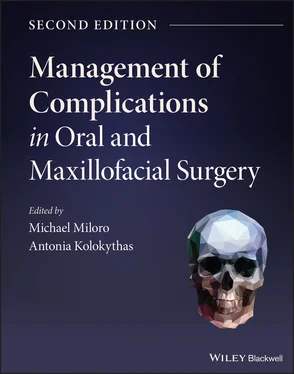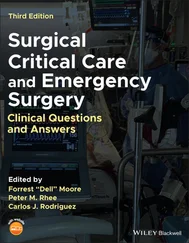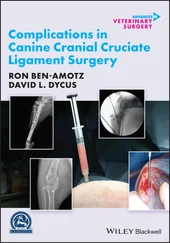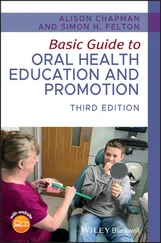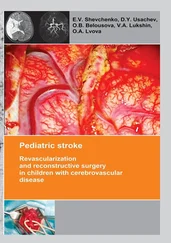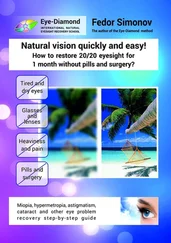5 Chapter 10Table 10.1. Comparison of injectable filler materials
6 Chapter 11Table 11.1. Managing facelift complications by region of incision
7 Chapter 13Table 13.1. Weighted index of comorbidityTable 13.2. Surgical treatment of benign odontogenic tumors with curative i...
8 Chapter 14Table 14.1. AJCC TNM classification for the cutaneous carcinoma of the head...Table 14.2. Lip reconstruction techniquesTable 14.3. Wound care
9 Chapter 20Table 20.1. Medical research council scale
10 Chapter 21Table 21.1. Negative outcomes of TORS
1 Chapter 1 Fig. 1.1. Compared to an adult airway, the pediatric airway demonstrates mor...
2 Chapter 2 Fig. 2.1. Bilateral nondisplaced mandibular angle fracture following mandibu... Fig. 2.2. (a) Preoperative appearance of a right OAF secondary to traumatic ... Fig. 2.3. Panoramic radiograph with teeth marked for extraction. Fig. 2.4. Fractured tuberosity with extraction of second molar. Fig. 2.5. (a) Tooth #1 displaced into the maxillary sinus during extraction ... Fig. 2.6. (a) CT axial view at the level of the third molars demonstrating t... Fig. 2.7. (a) Coronal view CT demonstrating tooth #16 displacement into the ... Fig. 2.8. Chest X‐ray demonstrating aspiration of a tooth. Fig. 2.9. 3D reconstruction of right mandibular osteomyelitis demonstrating ... Fig. 2.10. (a) Panoramic image of biopsy proven left mandibular osteomyeliti... Fig. 2.11. (a) Sagittal view CT demonstrating displacement of a 25‐gauge nee...
3 Chapter 3 Fig. 3.1. Implant displaced in the IAC causing IAN injury. Fig. 3.2. A closer CBCT view of an implant causing IAN transection. Fig. 3.3. Implant violation of the superior aspect of the IAC. Fig. 3.4. A closer CBCT view of an implant violating the IAC. Fig. 3.5. Damage to the adjacent tooth and bone loss due to poor implant pos... Fig. 3.6. Implants placed too close together compromising gingival esthetics... Fig. 3.7. Periapical radiograph showing implants placed too close together r... Fig. 3.8. Implant displacement into the left maxillary sinus. Fig. 3.9. Implant displacement into the right maxillary sinus. Fig. 3.10. Floor of mouth hematoma following anterior mandible implant place... Fig. 3.11. Implant violation of the lingual plate that may transect the subl... Fig. 3.12. CBCT view showing the violation of the lingual cortex by an impla... Fig. 3.13. Lingual nutrient canal in the anterior mandible that may lead to ... Fig. 3.14. Right mandible fracture from implant placement. Fig. 3.15. Open reduction with internal fixation of the mandible fracture. Fig. 3.16. Peri‐implantitis leading to bone loss (crater‐like defect). Fig. 3.17. Periapical radiograph showing bone loss due to peri‐implantitis.... Fig. 3.18. Implant restorative materials fractures. Fig. 3.19. Fractured implant. Fig. 3.20. Radiograph of fracture of the actual implant fixture. Fig. 3.21. Clinical view of fracture of the actual implant fixture. Fig. 3.22. Right maxillary sinusitis associated with right zygomatic implant... Fig. 3.23. (a–c) Quad‐zygoma implants with buccal fat pad coverage. Fig. 3.24. (a–c) Zygomatic implant placed into left orbital cavity causing p... Fig. 3.25. (a, b) Zygomatic implant placed into right infratemporal fossa. Fig. 3.26. (a, b) Following implant removal and replacement to engage the zy...
4 Chapter 4 Fig. 4.1. (a) A 3D CT reconstruction of the craniomaxillofacial skeleton of ... Fig. 4.2. (a) A laser scan of a patient with missing data (black arrow). (b)... Fig. 4.3. An axial view of a bone window of a preoperative CT in a patient w... Fig. 4.4. (a, b) An SLA model not cleaned and sterilized per manufacturer's ... Fig. 4.5. (a) An eight‐month‐old male with isolated nonsyndromic metopic cra... Fig. 4.6. A patient planned for a secondary reconstruction of the zygoma and...Fig. 4.7. A panorex is reconstructed from the CBCT.Fig. 4.8. STL and DICOM files are merged.Fig. 4.9. A virtual crown is placed. If maxillary and mandibular STL files a...Fig. 4.10. The software allows the surgeon to specify the dimensions of the ...Fig. 4.11. Patterns on the handpiece and patient tracker are registered with...Fig. 4.12. (a) An example of dynamic navigation being used for implant place...Fig. 4.13. The graphic user interface. The blue dot in the middle of the upp...Fig. 4.14. (a) A photograph taken at time of dental implant placement. (b) T...Fig. 4.15. Demonstration of how small deviations in the X‐clip position can ...Fig. 4.16. An example of an X‐clip that rocked at the time of surgery. A sys...Fig. 4.17. A good system check and accuracy is verified since the cusp tip i...Fig. 4.18. An example of subtle blurring and streaking that occurred across ...
5 Chapter 5Fig. 5.1. Complex soft tissue injury. Primary repair is both feasible and pr...Fig. 5.2. Three‐year‐old child involved in “mauling” injury from dog. (a) Bi...Fig. 5.3. Forty‐three‐year‐old woman involved in a knife assault. (a) Preope...Fig. 5.4. House‐Brackmann scale of facial function. (a) Outline. (b) Facial ...Fig. 5.5. Five‐year‐old girl with a deep laceration of the cheek, proximal t...Fig. 5.6. Fifty‐eight‐year‐old with complex through‐and‐through eyelid injur...Fig. 5.7. Technique for medial ectropion repair. (a) “C‐shaped” incision. (b...Fig. 5.8. Lower eyelid ectropion with increased scleral show.Fig. 5.9. Denonvilliers Z‐plasty for lateral lower eyelid ectropion.Fig. 5.10. Lateral ectropion. (a) Exposure keratopathy with secondary conjun...Fig. 5.11. Right lower lid entropion following transconjunctival approach to...Fig. 5.12. Principles of rigid internal fixation of the mandible. (a) Load‐s...Fig. 5.13. Malunion of untreated bilateral mandibular angle fractures. (a) L...Fig. 5.14. Inadequate fixation resulting in infection and nonunion. (a) Nonb...Fig. 5.15. (a) Panoramic radiograph demonstrating a failed attempt at closed...Fig. 5.16. Bilateral mandibular fractures with facial widening. (a) Preopera...Fig. 5.17. Facial asymmetry related to undertreated “double unilateral” mand...Fig. 5.18. Fifteen‐year‐old male with bilateral mandibular condyle fractures...Fig. 5.19. Risk factors for unfavorable results for the management of mandib...Fig. 5.20. The postulated theory behind TMJ ankylosis and facial fractures i...Fig. 5.21. Potential complications related to frontal sinus fractures.Fig. 5.22. Fifty‐two‐year‐old male with chronic frontal sinusitis 12 years f...Fig. 5.23. Periorbital cellulitis secondary to pansinusitis. (a) Preoperativ...Fig. 5.24. Pott’s Puffy tumor.Fig. 5.25. Axial CT image of patient with frontal skull fracture and epidura...Fig. 5.26. Cavernous sinus thrombosis. (a) Initial presentation. (b) Progres...Fig. 5.27. Coronal CT image of patient with anterior skull base fractures co...Fig. 5.28. Evaluation of computer based area and volume measurement from cor...Fig. 5.29. Nine‐year‐old with “trap door” blow‐out fracture of the orbital f...Fig. 5.30. Configuration in the fractured orbit. Top: normally, orbital cont...Fig. 5.31. Importance of reconstructing the critical orbital bulges. (a) Eno...Fig. 5.32. Factors leading to difficulty identifying and accurately reconstr...Fig. 5.33. Transconjunctival approach to the orbit. Rather than a preseptal ...Fig. 5.34. “Shattered orbit” with inadequate restoration of orbital volume a...Fig. 5.35. Importance of the zygoma for achieving normal facial width and sy...Fig. 5.36. “Bowing” of the zygomatic arch (green) resulting in widening of t...Fig. 5.37. Globe rupture.Fig. 5.38. Relative indications for surgical decompression of the optic nerv...Fig. 5.39. Telecanthus following repair of an NOE fracture.Fig. 5.40. “Saddle nose” deformity prior to repair of an NOE fracture.Fig. 5.41. Endonasal synechiae.Fig. 5.42. Inadequate reduction of Le Fort I fracture resulting in anterior ...Fig. 5.43. Facial widening after inadequate reduction, stabilization, and fi...Fig. 5.44. Transverse temporal bone fracture.Fig. 5.45. Postoperative hemorrhage following tracheostomy.
Читать дальше
